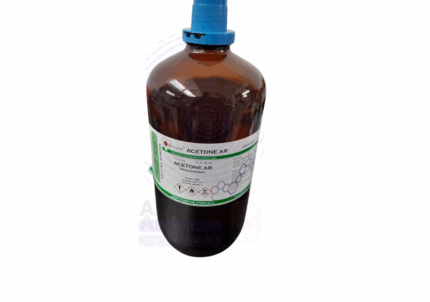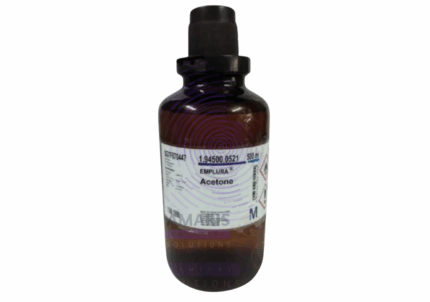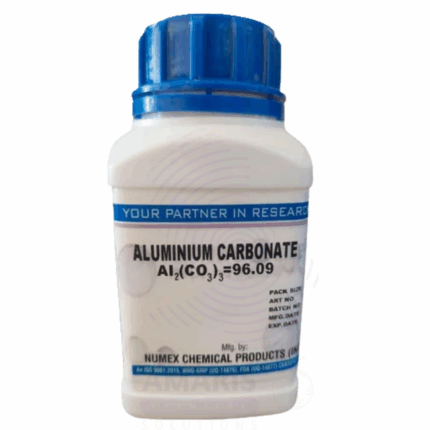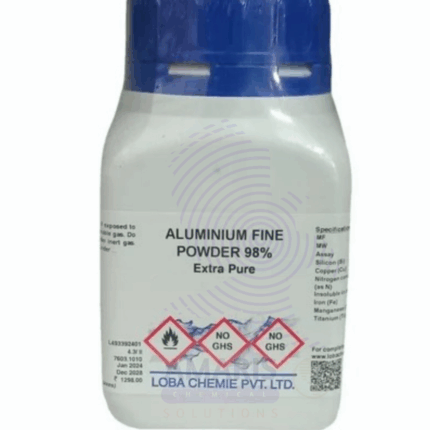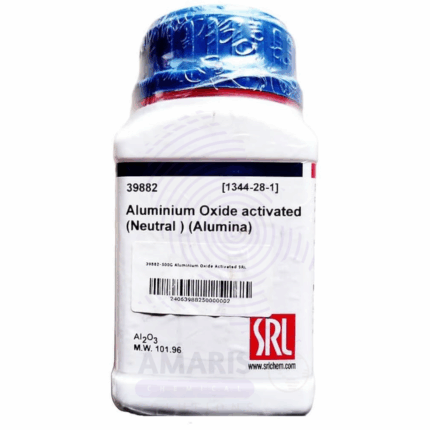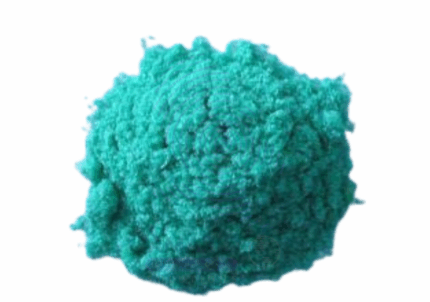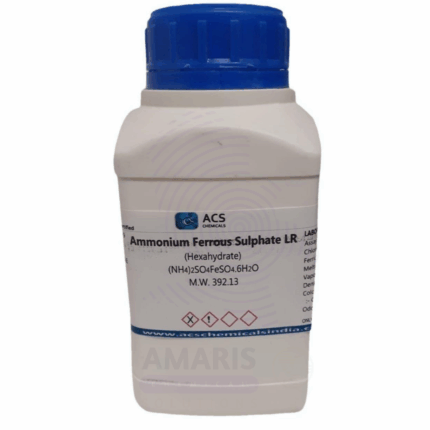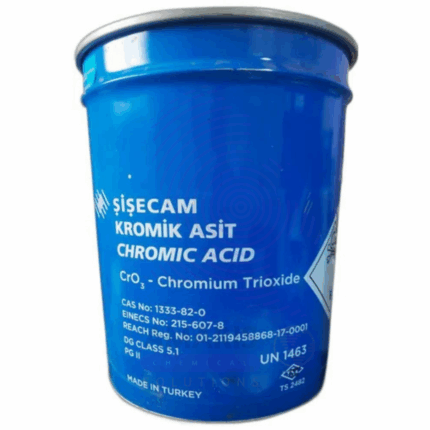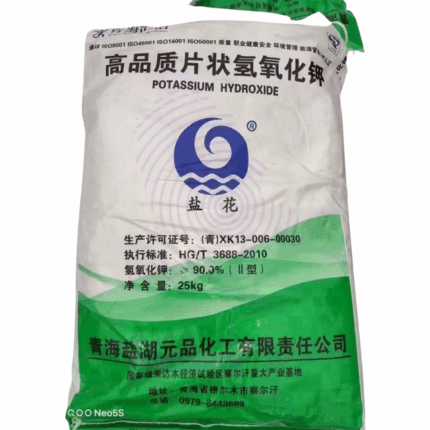

Carmine Aceto Extra Pure
$ 16.15 Original price was: $ 16.15.$ 16.00Current price is: $ 16.00.
Carmine Aceto Extra Pure is a high-purity, bright red dye derived from carminic acid, used extensively in laboratory applications involving histological staining, pH indicators, and biochemical assays. Known for its strong color stability in acidic environments, it is especially valuable in microscopy for highlighting cell structures and tissue components. Its precise formulation makes it suitable for use in analytical techniques requiring consistent coloration and minimal contamination. The extra pure grade ensures superior quality and reproducibility in experimental conditions. It should be stored in a cool, dry place, protected from direct light and moisture to preserve its dyeing efficacy and stability.
Carmine Aceto Extra Pure
Primary Uses
- Biological Staining Agent
- Widely used in microscopy as a nuclear stain to highlight cell nuclei and chromosomes, particularly in histology and cytology.
- Aceto-Carmine Staining in Plant Cytogenetics
- Essential for preparing root tip squash slides to observe mitosis and meiosis phases in plant cells (e.g., onion root tips).
- Chromosome Visualization in Mitosis Studies
- Used in educational and research labs for clear observation of metaphase chromosomes, especially in plant cytology and genetics labs.
- Teaching & Demonstration Reagent
- Standard dye in biology classroom experiments to demonstrate nuclear division.
Secondary Uses
- Reference Dye in Comparative Staining Techniques
- Occasionally used to compare with other nuclear stains (e.g., acetoorcein) during method optimization in staining protocols.
- Slide Preparation Quality Control
- Used to test fixation and staining consistency in microscopy slide prep techniques.
- Training in Laboratory Techniques
- Integral in lab training programs for preparing, fixing, and staining tissue samples.
| PACK SIZE |
2.5 Litres Glass bottle |
|---|
1. Basic Identification Attributes
- Chemical Name: Carmine Aceto
- Grade: Extra Pure (Laboratory Grade)
- Type: Natural dye derivative
- Synonyms: Acetous Carmine, Aceto-Carmine Solution
2. Physical & Chemical Properties
- Appearance: Deep red to reddish-violet liquid or powder (depending on form)
- Odor: Mild vinegar-like (if in solution)
- Solubility: Soluble in water and ethanol
- pH (for solution): Typically acidic (due to presence of acetic acid)
- Composition: Typically a solution of carmine dye in acetic acid and/or ethanol
3. Safety & Hazard Attributes
- Hazard Classification: Generally low hazard; may contain acetic acid
- Hazard Statements (if applicable):
- May cause mild skin or eye irritation
- Inhalation of dust (if powdered) should be avoided
- Precautionary Statements:
- Use gloves and eye protection
- Work in a well-ventilated area
- Avoid ingestion and inhalation
4. Storage & Handling Attributes
- Storage Conditions:
- Store tightly sealed in a cool, dry place away from light
- If in solution, store in amber bottles to protect from light degradation
- Handling Precautions:
- Use standard laboratory PPE (gloves, goggles, lab coat)
- Clean spills immediately; may stain surfaces
5. Regulatory & Compliance Attributes
- Transport: Not classified as hazardous for transport
- Waste Disposal: Dispose according to local chemical waste regulations
- REACH / OSHA / GHS: Not classified as hazardous under most chemical regulations
6. Environmental & Health Impact
- Toxicity: Very low toxicity; used in some biological stains and food coloring historically
- Health Effects:
- Minimal; may cause irritation with prolonged contact
- Environmental Hazards: Not considered environmentally hazardous in small lab quantities
- Fumes/Dusts: Avoid inhaling fine powder (if applicable); solution form poses minimal inhalation risk
SAFETY PRECAUTIONS
- Personal Protective Equipment (PPE):
- Wear lab coat, nitrile gloves, and safety goggles.
- Use in a well-ventilated area or fume hood to avoid inhalation of dust.
- Avoid direct contact with skin or eyes.
- Handling:
- Handle as a fine powder—avoid generating dust.
- Prevent contamination with incompatible substances such as strong acids or oxidizers.
- Use clean tools and containers to prevent reactions or degradation.
- Storage:
- Store in a cool, dry, dark place in tightly sealed containers.
- Protect from moisture, heat, and light.
- Keep away from oxidizing agents and strong acids.
FIRST AID MEASURES
- Inhalation:
- Move to fresh air.
- If irritation or symptoms persist, seek medical attention.
- Skin Contact:
- Wash with plenty of soap and water.
- Remove contaminated clothing.
- Seek medical advice if irritation occurs.
- Eye Contact:
- Rinse cautiously with water for several minutes.
- If irritation develops or persists, seek medical attention.
- Ingestion:
- Rinse mouth.
- Do not induce vomiting.
- Seek medical advice if large quantities are ingested or if symptoms appear.
FIRE FIGHTING MEASURES
- Flammability:
- May be combustible as a fine powder.
- Avoid dust buildup near ignition sources.
- Extinguishing Media:
- Use dry chemicals, CO₂, or foam.
- Water spray may be used to cool containers.
- Hazardous Combustion Products:
- Carbon oxides and nitrogen oxides may form under fire conditions.
- Firefighter Protection:
- Wear SCBA (self-contained breathing apparatus) and protective clothing.
- Wear SCBA (self-contained breathing apparatus) and protective clothing.


 Preservatives(food)
Preservatives(food) Flavor Enhancers
Flavor Enhancers Acidulants
Acidulants Sweeteners
Sweeteners Antioxidants
Antioxidants Colorants(food)
Colorants(food) Nutraceutical Ingredients (food)
Nutraceutical Ingredients (food) Nutrient Supplements
Nutrient Supplements Emulsifiers
Emulsifiers
 Collectors
Collectors Dust Suppressants
Dust Suppressants Explosives and Blasting Agents
Explosives and Blasting Agents Flocculants and Coagulants
Flocculants and Coagulants Frothers
Frothers Leaching Agents
Leaching Agents pH Modifiers
pH Modifiers Precious Metal Extraction Agents
Precious Metal Extraction Agents
 Antioxidants(plastic)
Antioxidants(plastic) Colorants (Pigments, Dyes)
Colorants (Pigments, Dyes) Fillers and Reinforcements
Fillers and Reinforcements Flame Retardants
Flame Retardants Monomers
Monomers Plasticizers
Plasticizers Polymerization Initiators
Polymerization Initiators Stabilizers (UV, Heat)
Stabilizers (UV, Heat)
 Antifoaming Agents
Antifoaming Agents Chelating Agents
Chelating Agents Coagulants and Flocculants
Coagulants and Flocculants Corrosion Inhibitors
Corrosion Inhibitors Disinfectants and Biocides
Disinfectants and Biocides Oxidizing Agents
Oxidizing Agents pH Adjusters
pH Adjusters Scale Inhibitors( water)
Scale Inhibitors( water)
 Antioxidants(cosmetic)
Antioxidants(cosmetic) Emollients
Emollients Fragrances and Essential Oils
Fragrances and Essential Oils Humectants
Humectants Preservatives
Preservatives Surfactants(cosmetic)
Surfactants(cosmetic) Thickeners
Thickeners UV Filters
UV Filters
 Fertilizers
Fertilizers Soil Conditioners
Soil Conditioners Plant Growth Regulators
Plant Growth Regulators Animal Feed Additives
Animal Feed Additives Biostimulants
Biostimulants Pesticides (Herbicides, Insecticides, Fungicides)
Pesticides (Herbicides, Insecticides, Fungicides)
 Active Pharmaceutical Ingredients (APIs)
Active Pharmaceutical Ingredients (APIs) Excipients
Excipients Solvents(pharmaceutical)
Solvents(pharmaceutical) Antibiotics
Antibiotics Antiseptics and Disinfectants
Antiseptics and Disinfectants Vaccine Adjuvants
Vaccine Adjuvants Nutraceutical Ingredients (pharmaceutical)
Nutraceutical Ingredients (pharmaceutical) Analgesics & Antipyretics
Analgesics & Antipyretics
 Analytical Reagents
Analytical Reagents Solvents(lab)
Solvents(lab) Chromatography Chemicals
Chromatography Chemicals Spectroscopy Reagents
Spectroscopy Reagents microbiology-and-cell-culture-reagents
microbiology-and-cell-culture-reagents Molecular Biology Reagents
Molecular Biology Reagents Biochemical Reagents
Biochemical Reagents Inorganic and Organic Standards
Inorganic and Organic Standards Laboratory Safety Chemicals
Laboratory Safety Chemicals Specialty Laboratory Chemicals(Special Laboratory Equipment)
Specialty Laboratory Chemicals(Special Laboratory Equipment)
 Demulsifiers
Demulsifiers Hydraulic Fracturing Fluids
Hydraulic Fracturing Fluids Scale Inhibitors(oil)
Scale Inhibitors(oil) Surfactants(oil)
Surfactants(oil) Drilling Fluids
Drilling Fluids
 Dyes and Pigments
Dyes and Pigments Bleaching Agents
Bleaching Agents Softening Agents
Softening Agents Finishing Agents
Finishing Agents Antistatic Agents
Antistatic Agents
 Admixtures
Admixtures Waterproofing Agents
Waterproofing Agents Sealants and Adhesives
Sealants and Adhesives Curing Compounds
Curing Compounds Concrete Repair Chemicals
Concrete Repair Chemicals Anti-Corrosion Coatings
Anti-Corrosion Coatings
 Surfactants(cleaning)
Surfactants(cleaning) Builders
Builders Enzymes
Enzymes Solvents (Cleaning)
Solvents (Cleaning) Fragrances
Fragrances
 Electronic Chemicals
Electronic Chemicals Catalysts
Catalysts Lubricants
Lubricants Photographic Chemicals
Photographic Chemicals Refrigerants
Refrigerants Automotive chemicals
Automotive chemicals Pyrotechnic Chemicals
Pyrotechnic Chemicals
 Biodegradable Surfactants
Biodegradable Surfactants Bio-based Solvents
Bio-based Solvents Renewable Polymers
Renewable Polymers Carbon Capture Chemicals
Carbon Capture Chemicals Wastewater Treatment Chemicals
Wastewater Treatment Chemicals
 Pigments
Pigments Solvents(paint)
Solvents(paint) Specialty Coatings
Specialty Coatings Binders/Resins
Binders/Resins Additives
Additives Driers
Driers Anti-Corrosion Agents
Anti-Corrosion Agents Functional Coatings
Functional Coatings Application-Specific Coatings
Application-Specific Coatings
 Fresh Herbs
Fresh Herbs Ground Spices
Ground Spices Whole Spices
Whole Spices Spice Blends
Spice Blends Dried Herbs
Dried Herbs
 Leavening Agents
Leavening Agents Dough Conditioners
Dough Conditioners Flour Treatments
Flour Treatments Fat Replacers
Fat Replacers Decoratives
Decoratives Preservatives(baking)
Preservatives(baking)
 Plasticizers & Softeners
Plasticizers & Softeners Reinforcing Agents
Reinforcing Agents Adhesion Promoters
Adhesion Promoters Vulcanizing Agents
Vulcanizing Agents Antidegradants
Antidegradants Blowing Agents
Blowing Agents Fillers & Extenders
Fillers & Extenders Accelerators & Retarders
Accelerators & Retarders

